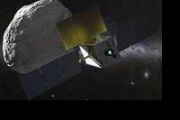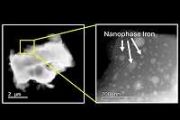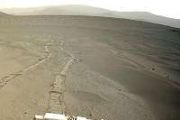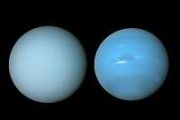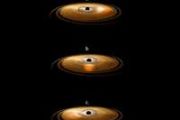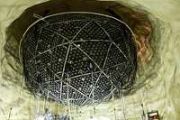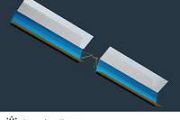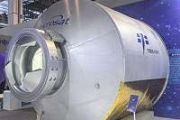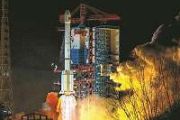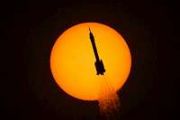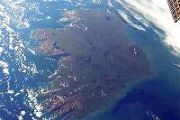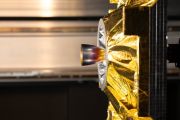
Copernical Team
Help NASA scientists find clouds on Mars
 NASA scientists hope to solve a fundamental mystery about Mars' atmosphere, and you can help. They've organized a project called Cloudspotting on Mars that invites the public to identify Martian clouds using the citizen science platform Zooniverse. The information may help researchers figure out why the planet's atmosphere is just 1% as dense as Earth's even though ample evidence suggests the pl
NASA scientists hope to solve a fundamental mystery about Mars' atmosphere, and you can help. They've organized a project called Cloudspotting on Mars that invites the public to identify Martian clouds using the citizen science platform Zooniverse. The information may help researchers figure out why the planet's atmosphere is just 1% as dense as Earth's even though ample evidence suggests the pl Unraveling a meteorite mystery reveals solar system origin story
 The violent event that likely preceded our Solar System's formation holds the solution to a longstanding meteorite mystery, says new work from Carnegie's Alan Boss published in The Astrophysical Journal.
The raw material from which our Solar System was constructed was dispersed when the shock wave from an exploding supernova injected material into a cloud of dust and gas, causing it to col
The violent event that likely preceded our Solar System's formation holds the solution to a longstanding meteorite mystery, says new work from Carnegie's Alan Boss published in The Astrophysical Journal.
The raw material from which our Solar System was constructed was dispersed when the shock wave from an exploding supernova injected material into a cloud of dust and gas, causing it to col Exotic carbon microcrystals in meteorite dust
 The largest meteorite observed so far this century entered the Earth's atmosphere above Chelyabinsk in the Southern Urals, Russia on February 15, 2013. Unusually, dust from the surface of this meteorite survived its fall and is being extensively studied.
This dust includes some unusually shaped microcrystals of carbon. A study of the morphology and simulations of the formation of these cry
The largest meteorite observed so far this century entered the Earth's atmosphere above Chelyabinsk in the Southern Urals, Russia on February 15, 2013. Unusually, dust from the surface of this meteorite survived its fall and is being extensively studied.
This dust includes some unusually shaped microcrystals of carbon. A study of the morphology and simulations of the formation of these cry Digging into our new drill hole: Sols 3517-3518
 After a successful drilling of Avanavero, the team is ready to dig even deeper into our investigation of this new drill target. Tosol's plan includes an important part of this process: our initial analysis of the drilled sample with the CheMin instrument.
In addition, the team planned three full hours of remote science activities at this new drill site, including a ChemCam LIBS observation
After a successful drilling of Avanavero, the team is ready to dig even deeper into our investigation of this new drill target. Tosol's plan includes an important part of this process: our initial analysis of the drilled sample with the CheMin instrument.
In addition, the team planned three full hours of remote science activities at this new drill site, including a ChemCam LIBS observation Virgin Orbit establishes sew Brazilian subsidiary; now licensed for launch operations in Alcantara
 Virgin Orbit (Nasdaq: VORB) alongside the Brazilian Space Agency has announced Virgin Orbit has been formally granted an operator's license to allow LauncherOne launch operations in Brazil.
The license is granted to Virgin Orbit Brasil Ltda. (VOBRA), a newly formed and wholly owned Brazilian subsidiary dedicated to bringing the LauncherOne air-launch rocket system to the Alcantara Launch C
Virgin Orbit (Nasdaq: VORB) alongside the Brazilian Space Agency has announced Virgin Orbit has been formally granted an operator's license to allow LauncherOne launch operations in Brazil.
The license is granted to Virgin Orbit Brasil Ltda. (VOBRA), a newly formed and wholly owned Brazilian subsidiary dedicated to bringing the LauncherOne air-launch rocket system to the Alcantara Launch C Rocket Lab launches CAPSTONE microsat to test new lunar orbit design for NASA
 NASA's CubeSat designed to test a unique lunar orbit is safely in space and on the first leg of its journey to the Moon. The spacecraft is heading toward an orbit intended in the future for Gateway, a lunar space station built by the agency and its commercial and international partners that will support NASA's Artemis program, including astronaut missions.
The Cislunar Autonomous Positioni
NASA's CubeSat designed to test a unique lunar orbit is safely in space and on the first leg of its journey to the Moon. The spacecraft is heading toward an orbit intended in the future for Gateway, a lunar space station built by the agency and its commercial and international partners that will support NASA's Artemis program, including astronaut missions.
The Cislunar Autonomous Positioni How scientist proposed a novel Kalman filter for target tracking in space
 The space station is a bridgehead for human space exploration missions. During its construction, operation, and maintenance, there are a variety of tasks that need to be performed. However, the space environment has harsh conditions such as microgravity, high vacuum, strong radiation, and large temperature differences, which seriously threaten the health and life safety of astronauts.
Sinc
The space station is a bridgehead for human space exploration missions. During its construction, operation, and maintenance, there are a variety of tasks that need to be performed. However, the space environment has harsh conditions such as microgravity, high vacuum, strong radiation, and large temperature differences, which seriously threaten the health and life safety of astronauts.
Sinc NASA completes Wet Dress Rehearsal, moves forward toward launch
 NASA has analyzed the data from the wet dress rehearsal conducted Monday, June 20, and determined the testing campaign is complete. The agency will roll Space Launch System (SLS) and Orion back to the Vehicle Assembly Building (VAB) at Kennedy next week to prepare the rocket and spacecraft for launch.
"During the wet dress rehearsal activities, we have incrementally added to our knowledg
NASA has analyzed the data from the wet dress rehearsal conducted Monday, June 20, and determined the testing campaign is complete. The agency will roll Space Launch System (SLS) and Orion back to the Vehicle Assembly Building (VAB) at Kennedy next week to prepare the rocket and spacecraft for launch.
"During the wet dress rehearsal activities, we have incrementally added to our knowledg NanoAvionics records first ever 4K resolution full satellite selfie in space
 NanoAvionics have used an off-the-shelf consumer camera, mounted on a selfie stick, to take the first ever 4K resolution full satellite selfie in space with an immersive view of Earth. The 12-megapixel photos and 4K video clips, taken with a GoPro Hero 7, show the company's MP42 microsatellite flying 550 km above the Coral Sea and the Great Barrier Reef - the only living structure visible from s
NanoAvionics have used an off-the-shelf consumer camera, mounted on a selfie stick, to take the first ever 4K resolution full satellite selfie in space with an immersive view of Earth. The 12-megapixel photos and 4K video clips, taken with a GoPro Hero 7, show the company's MP42 microsatellite flying 550 km above the Coral Sea and the Great Barrier Reef - the only living structure visible from s Launch goes green with Spaceport hydrogen plan
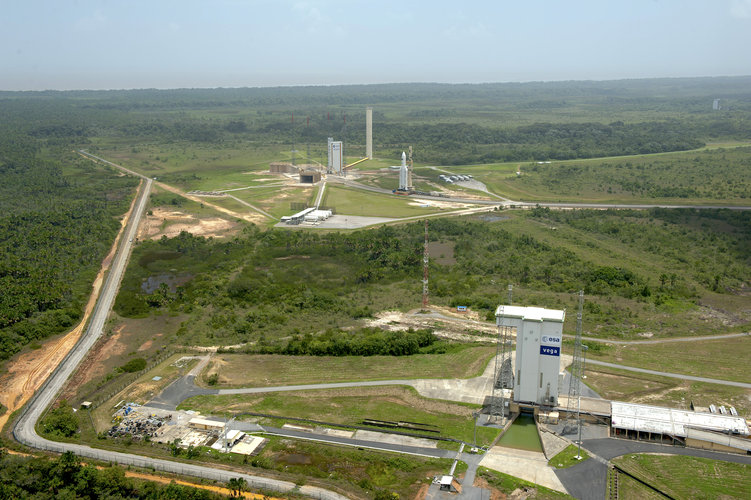
ESA, the French space agency CNES and a group of industrial and academic partners have set in motion an ambitious plan to slash CO2 emissions associated with orbital launches, by establishing infrastructure to underpin a hydrogen economy supporting Europe’s Spaceport in French Guiana.

